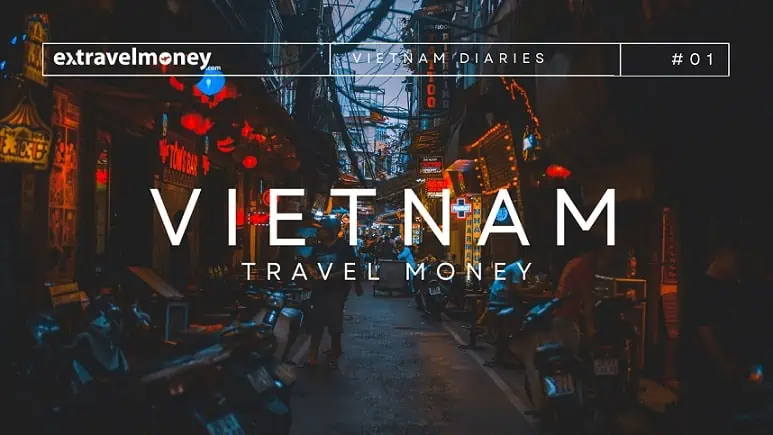
Quick Overview (for those who don’t want to read the whole article)
Carrying Money To Vietnam From India;
- Avoid buying Vietnamese Dong in India
- Buy US Dollars instead as cash – 70%
- Don’t rely on International Credit/Debit Cards
- Carry a Forex card as your secondary payment method – 30%
Read on for a detailed explanation below
Travelling to Vietnam? Thinking about how to carry money when going there from India?
Navigating currency matters in a foreign land can be tricky, so it is prudent to be prepared ahead of time.
While India has steadily modernised its payment methods, Vietnam still remains a cash-first economy. That is, cash is the most preferred mode of transaction.
This guide offers you first-hand tips and insights to ensure a smooth experience for you (money-wise) on your Vietnam trip.
Carrying Money To Vietnam From India
1. Avoid buying Vietnamese Dong in India
Not because the currency has a funny name but because it’s rare and difficult to obtain. Rare foreign currencies command a premium in the Indian market.
Typically converting INR to Dong can cost you a 15-20% markup which will heavily eat into your travel funds.
If you want to carry Dong to meet your initial expenses in Vietnam like calling a cab from the airport to your hotel or paying for snacks to a street food vendor, convert only a small amount, maybe Rs 5,000 worth. Avoid converting your entire travel budget to Dong in India.
Example:
Imagine you want to buy Rs 1 lakh worth of Vietnamese Dong for your trip.
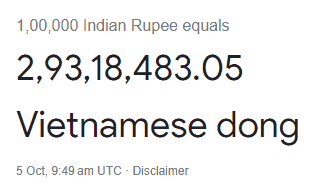
However, because of the premium exchange rate margins to get the same amount of dong in India, you’d have to shell out between Rs 1,15,000 – 1,20,000.
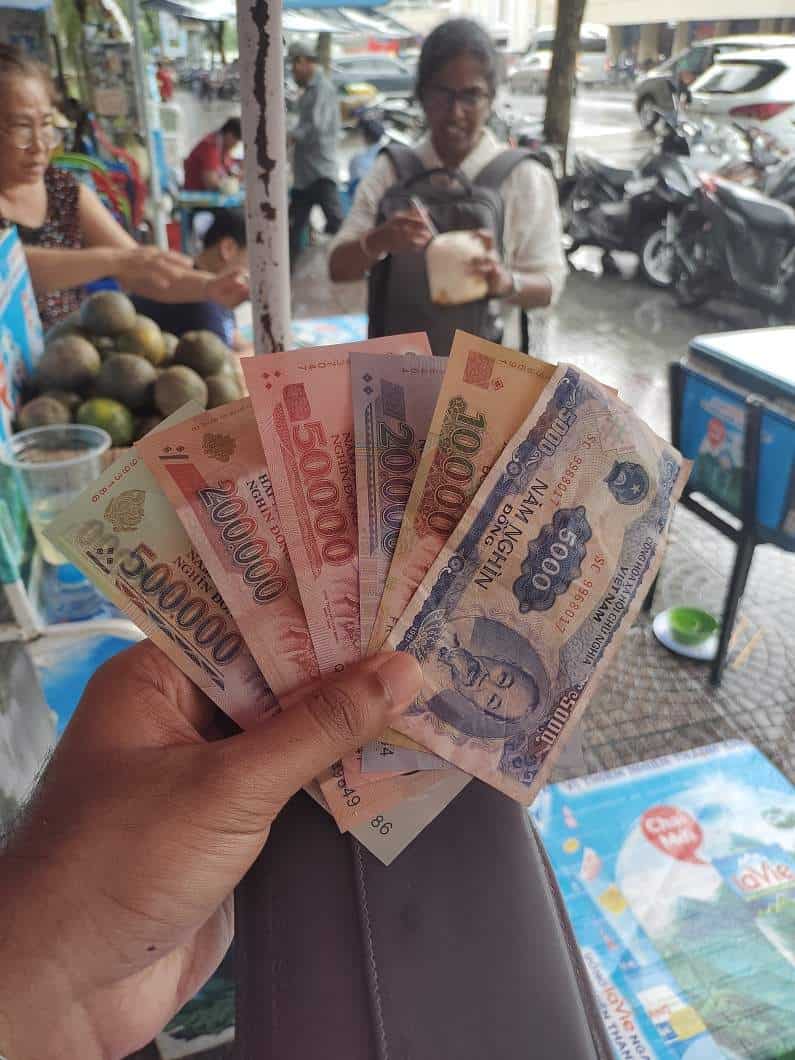
Tip: Don’t be overwhelmed by the VND currency notes being in millions.
The Dong (VND) is one of the world’s most devalued currencies, with a lot of zeros to account for. In day-to-day transactions, Vietnamese locals often omit the last three zeros. For instance, 500,000 VND becomes 500, and 1,000,000 VND is referred to as 1,000.
When you’re scanning a price list, remember, a dish priced at 89 means 89,000 VND.
2. Buy US Dollars instead
The most cost-effective way to carry money to Vietnam is by converting INR to US Dollars.
| Useful Link: Book US Dollars Currency Notes Online in India |
USD is the de-facto universal currency which is easily available and readily accepted for exchange all around the world.
In India, USD is widely available everywhere and the INR to USD currency exchange would only cost you an extra 1% in the form of exchange rate margins.
Now the natural thought in your mind would be, “But I can’t spend US dollars in Vietnam directly, I’ll have to convert that again to Vietnamese Dong after landing there!”. That is definitely true.
You’ll have to do currency exchange twice, once in India (INR-USD) and then in Vietnam (USD-VND).
But do keep in mind, the USD to VND conversion is even cheaper. Typically, exchanges in Vietnam only charge about 0.3% conversion rate for this!
Even with converting your currency twice, this way of carrying money is the cheapest option, both from our research and from first-hand experience of travellers in Vietnam. Here is an example to help you understand better.
Example:
Nishant bought Rs 1 lakh worth USD in India.
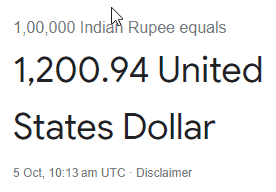
As per the exchange rate shown (05 Oct 2023) on Google, Rs 1 lakh = ~ 1,201 USD
To get the same amount of USD in India, you’d have to shell out 1% extra as conversion fees. So you’d have to pay Rs 1000 extra.
After landing in Vietnam, the USD to VND conversion will cost you 0.3%.
0.3% of 1201 USD = 3.6 USD which is Rs 300 as per today’s rate.
So total loss on conversion works out to Rs 1000 + Rs 1300 = Rs 1300. This loss is far lesser in comparison to directly converting INR to VND.
Tip 1: Don’t exchange USD for Dong inside the airport in Vietnam. Go into the nearby local market and you’ll find currency exchange outlets which offer superb rates.
Tip 2: Carry 70% of your total travel budget in the form of US dollar currency notes.
Don’t rely on International Credit/Debit Cards
They are not a good option because of the many extra costs.
Say you have an brought and international credit or debit card from India that you are planning to use in Vietnam;
Swiping
3.5% forex markup – International debit/credit cards have a foreign currency conversion fee which is around 3.5%. This is the fee for converting the INR balance to VND. You might not see it right then but will be able to see it later in your card statement.
ATM Withdrawal
ATM Withdrawal is even more costly than Swiping. It has a bunch of charges associated with it;
1. 3.5% forex markup – This charge is present here also. 3.5% of the amount being withdrawn will be taken from your card balance as currency conversion charges.
2. Card usage abroad fee – Usually it’s anywhere around Rs 100 to Rs 300 depending on your card provider. Also, GST is applicable on this charge which works out to Rs 18 to Rs 54 (18% GST).
3. Foreign ATM fee – The Vietnam bank operating the ATM will charge a fee for using it. This is around 55,000 to 60,000 VND depending on the ATM. This works out to around INR 200.
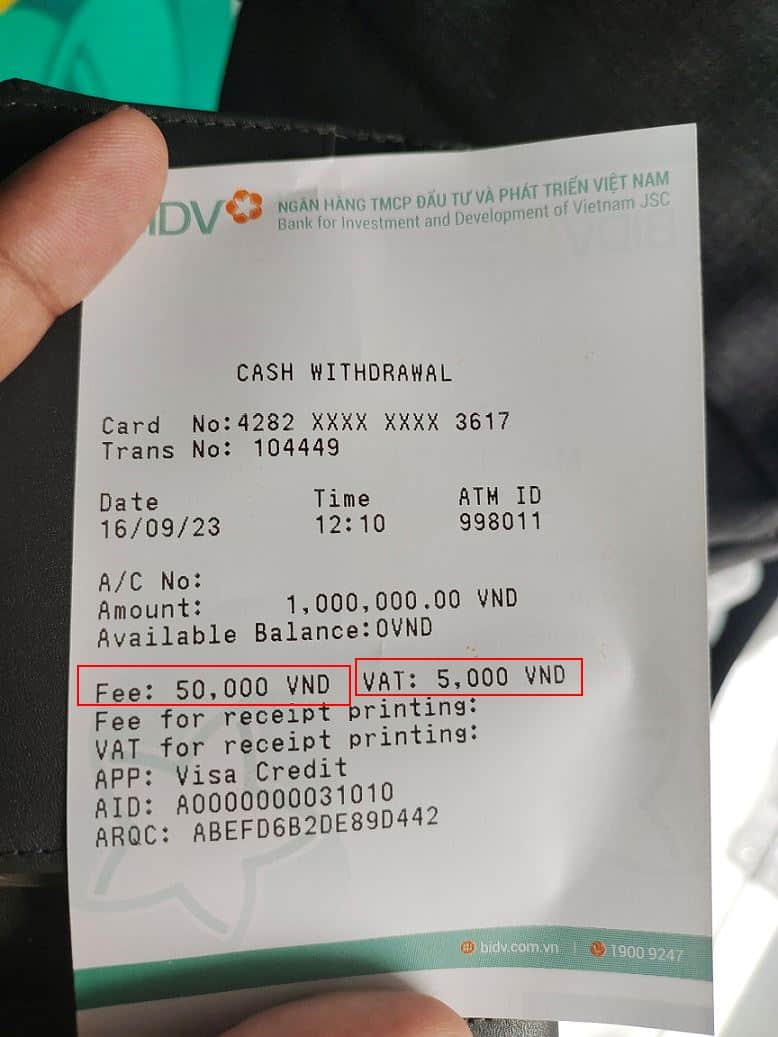
In total, on each ATM withdrawal, you can expect to lose a significant amount.
| Card Usage Abroad Fee + Foreign ATM Fee + Forex Markup Fee
= Rs 318 to Rs 554 + 3.5% Conversion Charge |
This makes using an international credit/debit card very cost-prohibitive with respect to ATM withdrawals.
Carry a Forex card as your secondary payment method
A Forex card, often termed as a ‘travel card’, operates similarly to a debit card but is specifically designed for international travel. You can pre-load foreign currencies in it for your trip abroad and use it during your travels.
| Useful Link: Book Forex Cards Online
At ExTravelMoney, you can get multi-currency forex cards which can carry US Dollars, Thai Baht, Singapore Dollars, Australian Dollars, UAE Dirhams, Saudi Riyal, Euro, British Pounds, Swiss Francs and Canadian Dollars. |
Use this card as a secondary payment mode & carry 30% of your travel funds in it. Here’s why it’s a good choice for those travelling from India to Vietnam;
Pre-load USD in the card
In India, most banks and other Forex card providers don’t have the option of loading Vietnamese Dong in their cards. So go for the next best alternative which is US dollars.
When loading USD in a Forex card, you get even cheaper rates than buying USD as currency. So you save that much more. You can use it for swiping, ATM withdrawals and online purchases in Vietnam.
So why not use this as a primary payment method?
Because it has some of the same issues as an international Debit/Credit card such as currency conversion charges and ATM withdrawal fees. However, these are generally lower in a Forex card.
Locked in Exchange Rates
The currency you are loading in your Forex card is fixed. This means you are effectively locking in the exchange rate, protecting yourself from any unexpected spikes during your trip.
Load Multiple Foreign Currencies
While it is true that you can’t load Vietnamese Dong in a Forex card, you do have the ability to load multiple foreign currencies which can come in handy when you are going on other foreign trips in the future. This is a useful feature, especially for people who like to travel and Forex cards usually have a validity of 5 years.
Comparison Table of Different Payment Methods in Vietnam
| Money Type | Advantage | Disadvantage |
| USD Currency Notes | – Widely available in India
– Easily accepted for exchange in Vietnam – Low conversion costs |
Carrying large amounts of cash can be risky |
| International Credit/Debit Card | – Convenient to use
– Most people already have one |
– High forex markup (3.5%)
– ATM withdrawal costs – Card usage abroad fee – Foreign ATM fee |
| Forex Card (Prepaid Travel Card) | – Lower forex markups;
– accepted in many establishments – Can be used for online bookings |
– Has same charges as that of international credit/debit card but lower
– Can’t preload Vietnamese Dong |
When travelling from India to Vietnam, managing your money smartly is key. Convert most of your INR to USD and consider using a Forex card for added convenience.
It’s essential to weigh the advantages and disadvantages of each payment method, as detailed above, and choose a strategy that offers both convenience and cost savings. Remember, a well-informed traveller not only enjoys their trip but also maximizes their spending power.
Also Read: How To Apply Vietnam Travel Visa For Indian Passport Holders

Subhash, with over 8 years of experience as a content writer in the finance niche, is the head of content at ExTravelMoney.com. His expertise spans international remittance, currency exchange, RBI regulations, and travel abroad, simplifying complex financial topics, and transforming them into accessible and engaging content.
